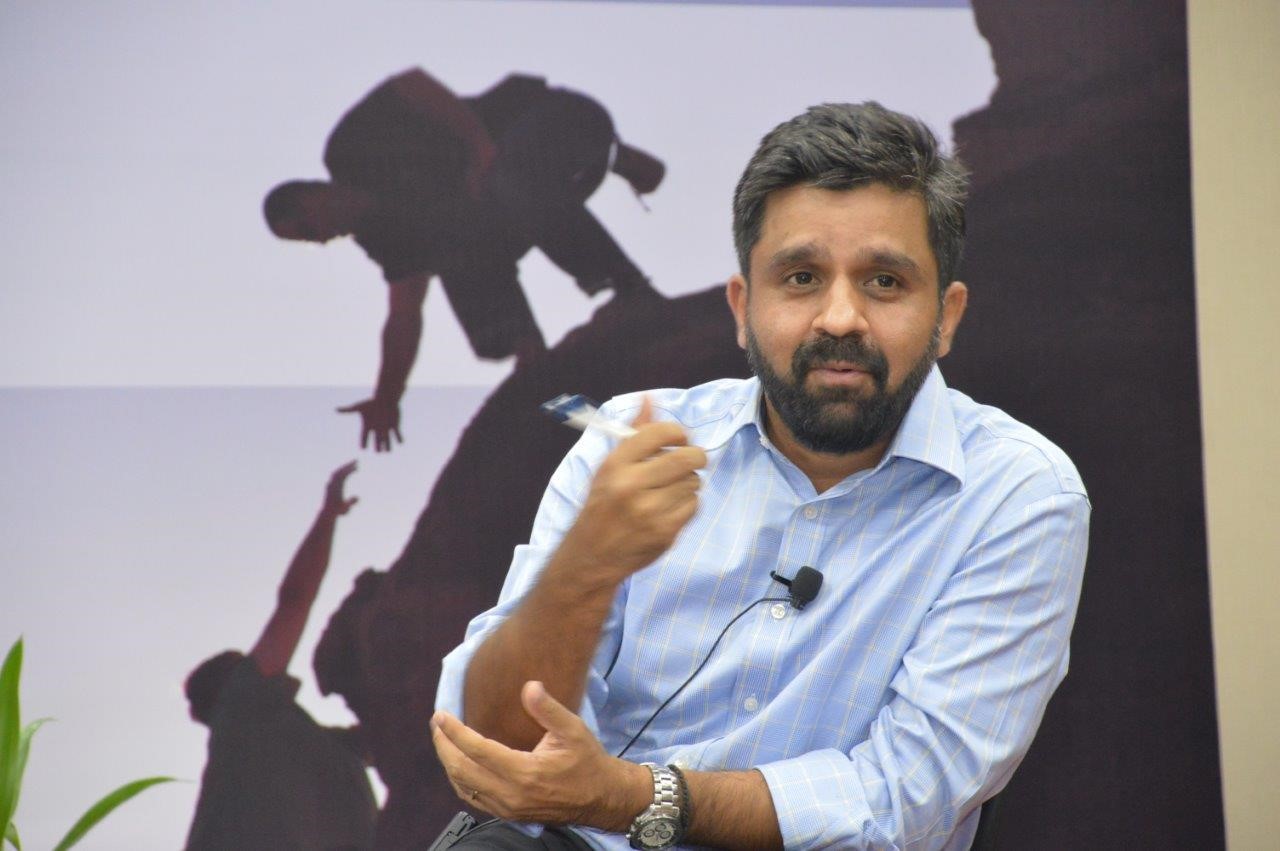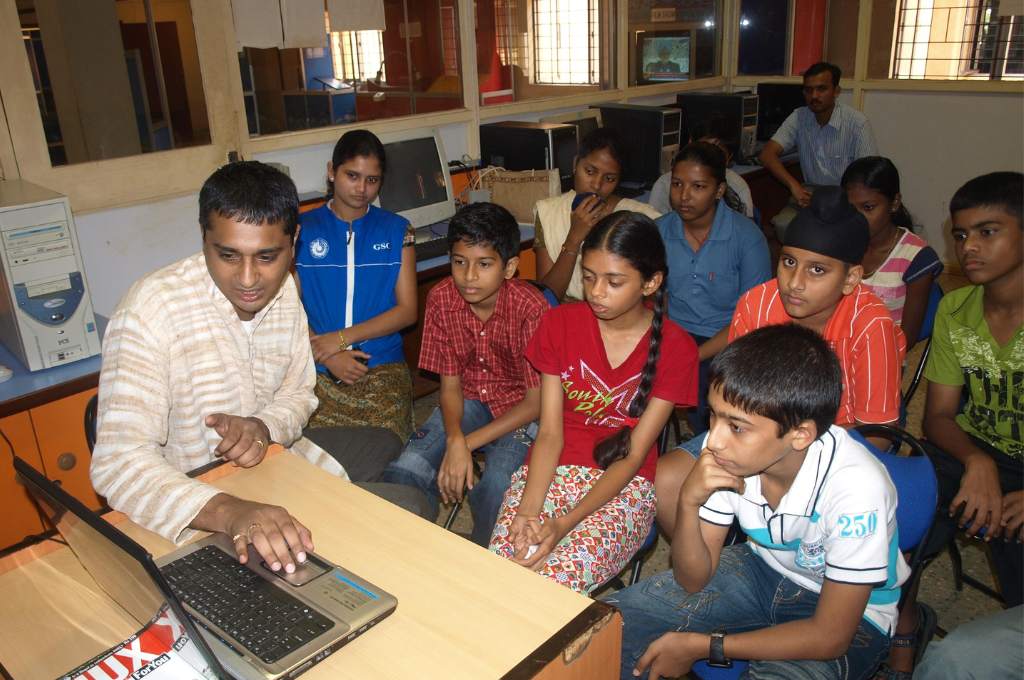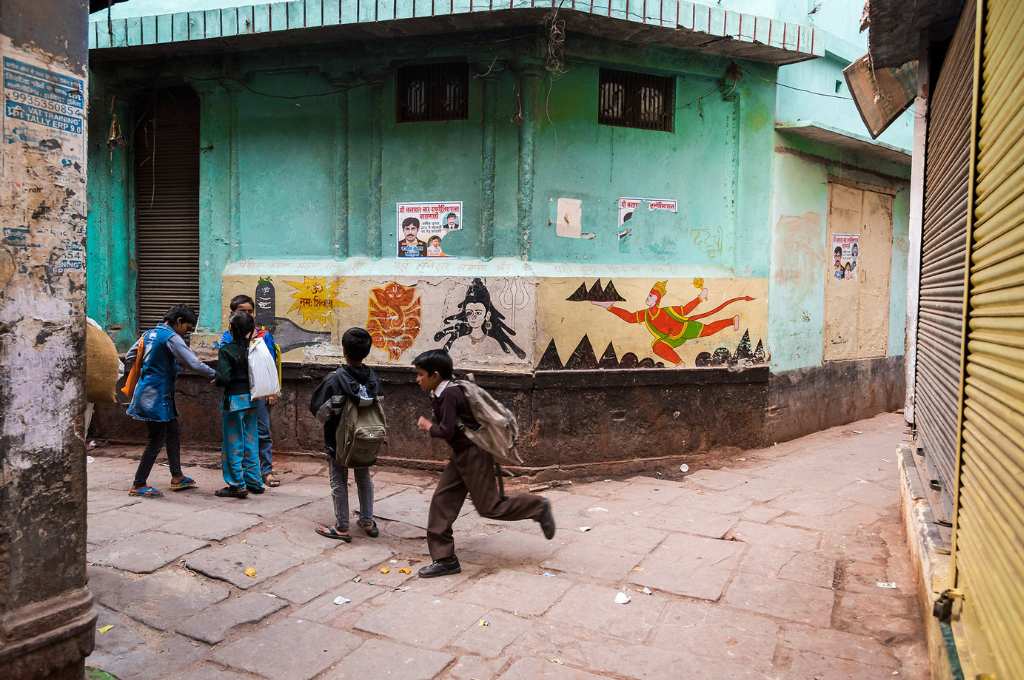There is a telling scene in Hindi Medium, the recently released Hindi film, that sums up the feeling of a lot of parents in India. Mitho panics about the fact that her daughter, Piya, won’t learn anything in a government school. She’s especially worried about English–and that not learning good English at the government school could lead to Piya being unsuccessful in life.
A good quality education for their children is every parent’s dream; they see it as a ladder to a better life. And, not very long ago, government schools in India helped them get there. Several luminaries from various walks of life were, in fact, products of these schools.
However, a lot has changed in recent years. In the last two years alone, more than six and a half million children have moved out of government schools owing to the poor quality of education there. And countless small private schools promising ‘English medium’ education have mushroomed all over the country. Ironically enough, research shows that on average, private schools deliver only as well as the government schools.
Focusing on the right problem
A common sense solution to this predicament, then, would be to fix our neighbourhood government schools. However, simply allocating money for infrastructural improvements is not enough; it requires more.
[quote]Allocating money for infrastructural improvements in schools is not enough.[/quote]
Parents who have a voice (and those who do not) must together start demanding good quality government schools. It is also important, among other things, to build accountability structures into schools, empower parents and train teachers.
That’s what we set out to do when we set up The Education Alliance (TEA), an initiative to engage education nonprofits to assist the government in driving change in government schools.
Starting in 2015 with one school–SDMC Lajpat Nagar-III–we have made systematic efforts to bring in strong educational nonprofits–such as Gyanshala, Muni International, Study Hall Education Foundation, Simple Education Foundation, Deepalaya, Katha, Vidya, Learning Links Foundation, Ark, Lead Schools, and I am a Teacher–to work in the primary schools of SDMC.

Photo courtesy: The Education Alliance
These partner organisations have academic as well as administrative responsibilities and are in charge of driving enrolment, attendance and student learning in collaboration with the government principal and teachers.
Within just a year of launching the School Quality Enhancement Programme, proof points of success have started pouring in. While 550 schools in the rest of the system lost 12,000 students last year, enrolment in the 12 intervention schools more than doubled to 1,600 children. By the end of 2016-17, all schools exceeded the student attendance target of 80 percent, while teacher attendance stood at an impressive 94 percent.
The government and the nonprofit partners together deployed 77 teachers, up from 40, thereby ensuring no child was left behind. A journey that began with one school in 2015, now has 30 schools with a potential to impact 6,000 children across all grades (Nursery through Grade 5).
With five-year MoUs in place–and the hope of a five-year extension beyond that–we expect to be around until the schools are able to sustain on their own.
Results beyond numbers
We are also witnessing softer, more intrinsic wins that are not adequately captured in the numbers:
- Renewed faith in the system owing to decentralised decision-making and greater accountability at the school level.
- Improved punctuality among teachers, who now take greater interest in the newer pedagogical techniques being deployed.
- Increased attendance and enthusiasm in schools as well as in teacher training and professional development sessions.
- Higher participation from parents in parent-teacher meetings owing to extensive community mobilisation efforts.
Stories such as that of nine-year-old Karan prove how these schools are delivering on their promise. A student of South Delhi Municipal Corporation (SDMC), South Extension-II, Karan’s academic performance improved significantly with the help of the Katha-SDMC partnership. An average student earlier, Karan has recently been selected for the ‘Medhavi Pariksha’ (scholarship exam) based on his outstanding performance in the final exams. Karan’s parents, a guard and a domestic help, both migrants from UP, now envisage a bright future for him.
Making the alliance work
Achieving such results has been possible with, among other things, meticulous planning, constant monitoring, and a sustained engagement with the various people and partners involved in the project.
Defining roles and responsibilities
TEA and the nonprofit partners entered into MoUs that clearly defined the roles and responsibilities of all partners, making it easier to implement such a complex partnership.
The key responsibilities of the partners include achieving targets on student enrolment, attendance, and retention, and developing the capabilities of SDMC teaching staff to deliver improved learning outcomes.
TEA’s responsibilities include liaising with government officials to raise the issues faced by the schools, and implementing frameworks for monitoring and evaluation and periodic reviews with the government.
Identifying and monitoring levers for success
As the programme progressed, we observed that a robust academic model and a disciplined community engagement structure were key drivers for success in a government partnership school. This, in turn, fed into our due diligence framework for evaluating potential future partners.
Articulating a common goal
TEA had to ensure mission and vision alignment among all stakeholders to ensure the success of the programme.
We had to ensure that all members of the education department were convinced by the programme vision. Faced with misgivings about external intervention in a government school, it was critical that we built a symbiotic relationship between the government and partner staff in every school.
[quote]It is critical to build a symbiotic relationship between the government and the nonprofit partner staff.[/quote]
At the beginning of the academic year, the SDMC Additional Commissioner chaired the first meeting in the presence of all staff and partners. She set the foundation for the partnership by emphasising that the child was at the centre of the programme and that the partners and school staff should work together to ensure the best for the child.
We also held quarterly review meetings with zonal officials and school and partner teams to assess the progress in schools and highlight key issues and concerns.

Photo courtesy: The Education Alliance
Accountability for all
- Teachers are held to high expectations through close monitoring of lesson delivery and measurement of improvement in student learning levels. Constant feedback through classroom observations and training sessions has allowed them to grow professionally.
- Parents are held to high expectations through data-driven parent-teacher meetings and community visits. The strong correlation between sustained attendance and increased learning was conveyed to them. The programme’s cloud-based school MIS allowed nonprofits to analyse attendance trends of students and inform parents when absenteeism was recorded.
- Students are held to high expectations through rewards and recognition. Learning has been made fun and challenging to sustain their interest, and co-curricular activities ensure their all-round development.
As the SDMC initiative shows, we can leverage the potential of nonprofit partners and the resources of the government system to create meaningful, long-term, sustainable change in government schools. With commitment, the ability to build structured partnerships, and implement rigorous M&E systems, we can make our government schools great again.




